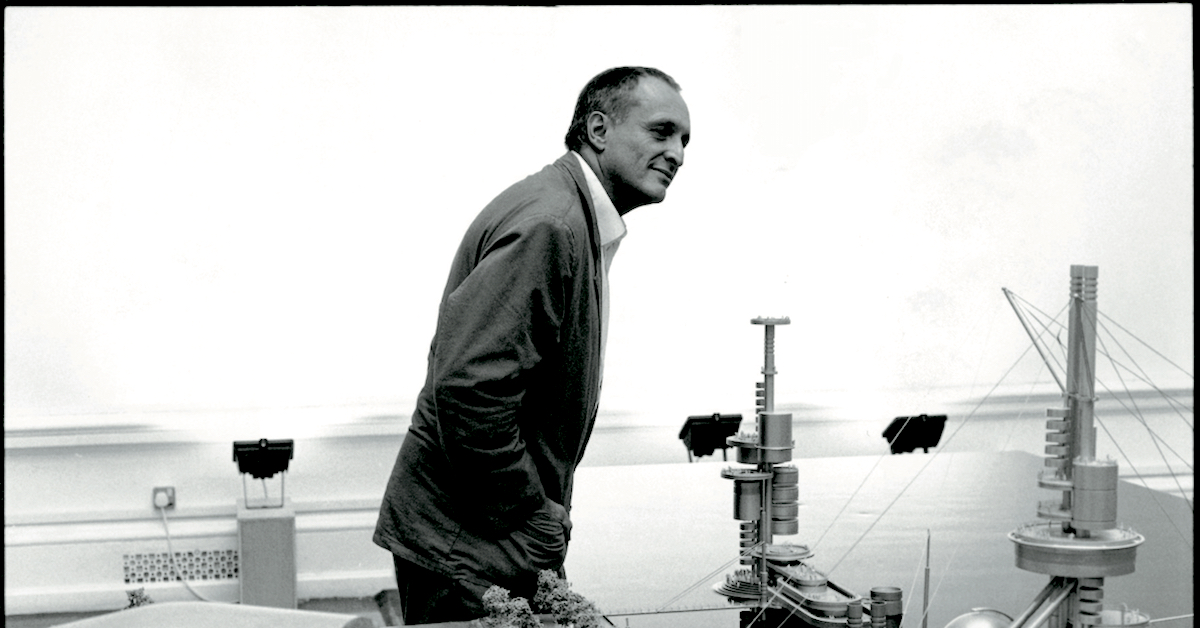Richard Rogers RA (23 July 1933 – 18 December 2021)one of the most highly regarded architects of his generation, has died at age 88. Rogers, in many ways, changed London’s skyline with inventive commissions like the Millennium Dome and the ‘Cheesegrater.’ His firm Rogers Stirk Harbour + Partners, put out the following statement late yesterday.
Rogers came to prominence with his innovative designs for the Pompidou Centre in Paris
“It is with deep sadness that the partners and staff of Rogers Stirk Harbour + Partners acknowledge the death of our colleague, friend, and founder partner Richard Rogers. For the four decades and more that we have all variously shared with him, he will be remembered as a colleague and friend, who was gregarious, always completely free of status, always inclusive, always exploring and looking ahead. A man of immense drive and charisma, he was equally a man of civility and integrity, dedicated to the art and science of architecture, of urbanism, the life of the city, of political commitment and positive social change. His love of people, of discussion, the sharing of views, of exploring new paths and of cooperative and creative working was reflected in the practice he founded, and which continues to espouse and develop those ideals today. Richard lived his family and professional life as one and our thoughts and condolences are very much with his family today – The partners + staff. Rogers Stirk Harbour + Partners (RSHP).”
Born in 1933 to an Anglo-Italian family in Florence, he trained at the Architectural Association School of Architecture in London before graduating with a master’s from Yale. His studio won the Stirling Prize – the UK’s top honour for a building – twice, first for Madrid’s Barajas Airport in 2006 and later for the Maggie’s Centre in London in 2009.
Rogers first came to prominence with his innovative designs for the Pompidou Centre in Paris, which he co-designed with Renzo Piano. This was followed by the Lloyd’s of London building. Rogers was regarded as one of the world’s most successful and influential architects, and he won most of his industry’s major honours.
The Pompidou Centre established Rogers’s trademark of exposing most of the building’s services (water, heating and ventilation ducts, and stairs) on the exterior, leaving the internal spaces uncluttered and open for visitors to the centre’s art exhibitions. This style, dubbed “Bowellism” by some critics, was not universally popular at the time the centre opened in 1977, but today the Pompidou Centre is a widely admired Parisian landmark. Rogers revisited this inside-out style with his design for London’s Lloyd’s building, completed in 1986 – another controversial design which has since become a famous and distinctive landmark in its own right.
In 1995, he became the first architect to deliver the BBC’s annual Reith Lectures. This series of five talks, titled Sustainable City, were later adapted into the book Cities for a Small Planet (Faber and Faber: London 1997. His most famous London building was the Millennium Dome, designed in conjunction with engineering firm Buro Happold and completed in 1999. It was the subject of fierce political and public debate over the cost and contents of the exhibition it contained; the building itself cost £43 million. In May 2006, Rogers’ practice was chosen as the architect of Tower 3 of the new World Trade Center in New York City, replacing the old World Trade Center which was destroyed in the September 11 attacks.
Rogers was knighted in 1991.

